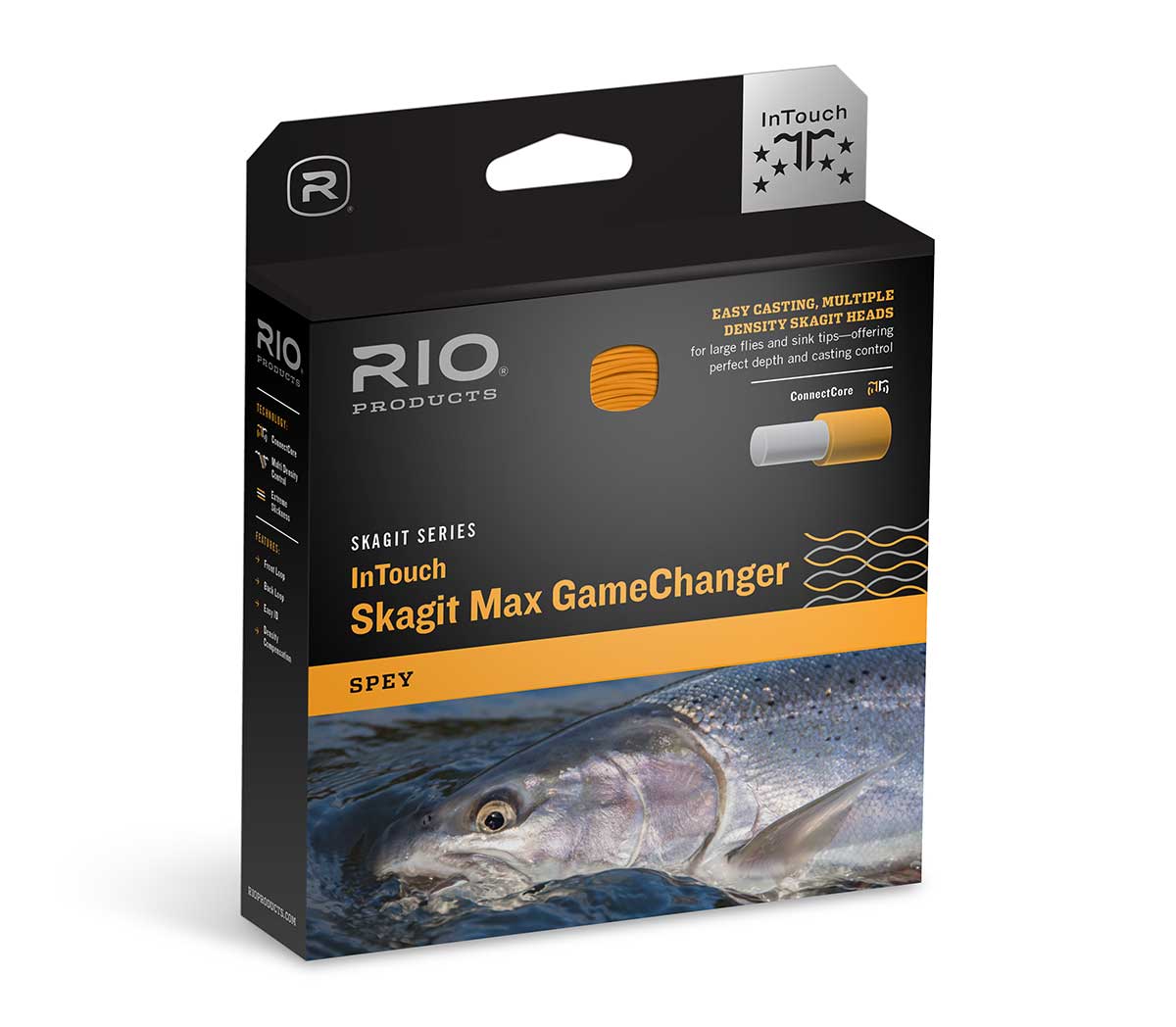Fly Line Review: RIO Skagit Max GameChanger
RIO’s new InTouch Skagit Max GameChanger is a multiple-density Skagit head that excels at turning over big flies and sink tips. Its seamless integrated densities avoid the hinging and kicking that can occur when casting sink tips, ensuring a smooth, efficient cast. This design will also give you an improved fishing presentation as it will have a much smoother transition through the water column.
I tested the 8/9 Float/Hover/Intermediate GameChanger with a 5-foot intermediate/5 foot T-14 I-Mow tip, 3.5 feet of 10 pound fluorocarbon leader, and a variety of very large flies from big 3/0 Dees to 35 mm shanks. Casting this line was easy and smooth. The powerful taper can really turn over my big flies even in the 50 mile an hour wind gusts I was experiencing while standing up tight against a 4 foot wall of shelf ice with no room behind me. I also found it far less “clunky” on landing. Less splash / increased stealth is always a good thing.
The multi-density really helps with mending line. I was able to mend and correct my floating section without moving the sinking sections, which gave me the slow swing presentation I was aiming for to tempt a winter steelhead. I had control of how and where I wanted my flies to swim.
The Gamechanger heads have a good selection of grain weights between 425 and 725 grains and are between 23 and 25 feet in length with welded loops on each end. They feature RIO’s XS (extreme slickness) and Connectcore technologies. A super slick, dirt repelling, ultra low stretching line that is sensitive to subtle takes.
The heads comes in 3 different density options:
The F/H/I is a good option for swinging between 2 to 4 feet.
The F/H/I/S3 fishes between 4 and 8 feet.
The F/I/S3/S5 head is the fastest sinking and will get you down between 8 and 12 feet.
These Skagit heads will need a sink tip to perform at their best.
I highly recommend these lines for those who want to have control of where and how you want your line and flies to fish in the multifaceted hydraulics of a rivers’ pools, runs, and pocket water.












